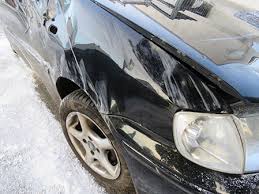Car accidents can happen to anyone, anywhere, at any time. Whether kfz gutachter kaltenkirchen it’s a minor fender bender or a major collision, assessing the damage to your vehicle is crucial for ensuring safety and determining the necessary repairs. In this article, we’ll delve into the process of car damage assessment, covering everything from initial inspection to final repairs.
- Initial Assessment:
- After an accident, the first step is to assess the extent of the damage. Start by checking for visible signs such as dents, scratches, and broken parts.
- Look for structural damage, including bent frames or misaligned components, which may not be immediately apparent.
- Take note of any fluid leaks, as these could indicate damage to the engine, transmission, or other vital systems.
- Documenting Damage:
- Document the damage thoroughly by taking photographs from multiple angles. This documentation will be crucial for insurance claims and repair estimates.
- Note any pre-existing damage that may complicate the assessment process. Differentiating between old and new damage is essential for accurate evaluation.
- Assessing Structural Integrity:
- Structural damage can compromise the safety and performance of your vehicle. Have a professional mechanic or body shop inspect the frame and chassis for any signs of deformation or weakness.
- Utilize advanced diagnostic tools such as laser measuring systems to identify even minor deviations from factory specifications.
- Mechanical and Electrical Systems:
- Damage to mechanical and electrical systems can be less obvious but equally critical. Have a qualified technician inspect the engine, transmission, brakes, suspension, and electrical components for any issues.
- Conduct diagnostic tests to identify hidden problems that may affect the vehicle’s performance or safety.
- Estimating Repair Costs:
- Once the damage has been thoroughly assessed, obtain repair estimates from reputable auto repair shops or body shops.
- Ensure that the estimates cover all necessary repairs and replacement parts, including labor costs.
- Compare multiple estimates to ensure that you’re getting a fair price for the repairs.
- Choosing a Repair Shop:
- Select a repair shop with a reputation for quality workmanship and excellent customer service.
- Verify that the shop is certified and equipped to handle the specific repairs your vehicle requires.
- Consider factors such as warranty coverage, turnaround time, and convenience when choosing a repair facility.
- Monitoring the Repair Process:
- Stay informed throughout the repair process by requesting updates from the repair shop.
- Inspect the completed repairs carefully to ensure that they meet your expectations and the agreed-upon standards.
- Address any concerns or issues with the repair shop promptly to ensure satisfactory results.
Conclusion:
Car damage assessment is a critical step in the aftermath of an accident, ensuring that necessary repairs are identified and completed promptly. By following the steps outlined in this guide and seeking professional assistance when needed, you can navigate the assessment process with confidence and get your vehicle back on the road safely. Remember to document the damage, obtain multiple repair estimates, and choose a reputable repair shop for the best results.

